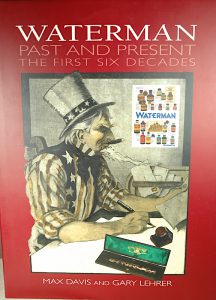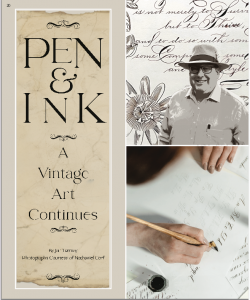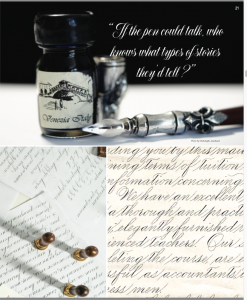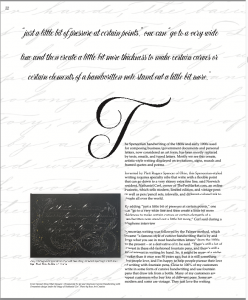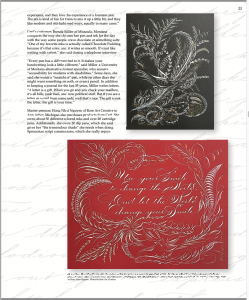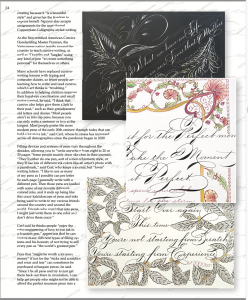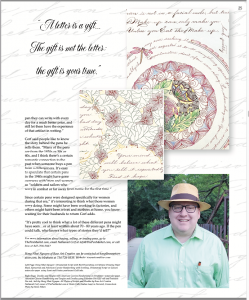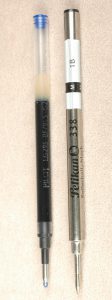
You can see a Pilot G2 refill next to a Pelikan standard rollerball refill in this photo. Look closely, and you can see that a G2 will fit most rollerball pens that take standard RB refils.
Quite possibly the most popular disposable pens on earth are Pilot G2 gel pens. They are so incredibly smooth and fluid for any type of ball-tipped writing device.
About a year ago, in an act of refill desperation, I was out of standard rollerball refills and trying ship out a pen I had just sold, in which I promised a fresh, working rollerball refill. That is when I noticed that I had some spare Pilot G2 refills lying around, which I had gotten and ignored from a large collection I had purchased.
On closer inspection, I realized that the two refills were close enough alike that a G2 might fit in the Waterman that needed it. Lo and behold, it did. It wrote magnificently! Pretty soon I was popping them into Auroras, Pelikans and every other rollerball that needed a similarly sized refill.
Not all pens take them easily. As you can see, this Pelikan replacement refill is a little longer than the G2. BUT, if it turns out the G2 is too short, just wad up a little tissue and fill the back end of the pen with it until the G2 fits and writes without any jiggling.
I like rollerball refills just fine, but none compare to a G2…for me…in the writing experience. I don’t see using regular rollerball refills, again.


 Shopping Cart
Shopping Cart




